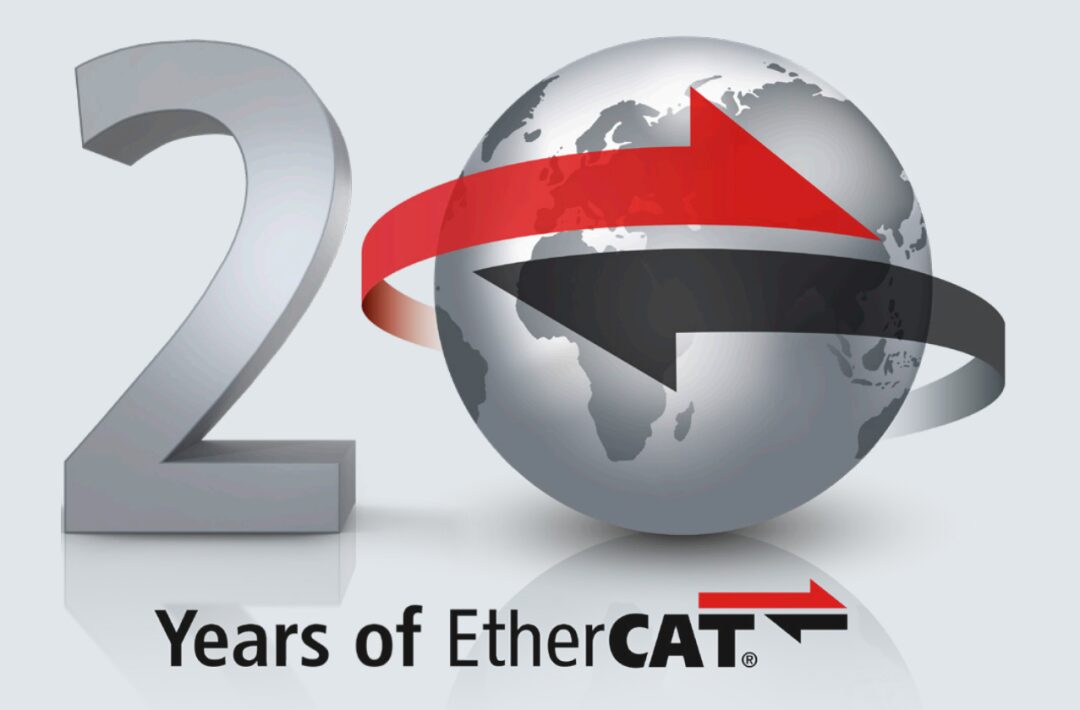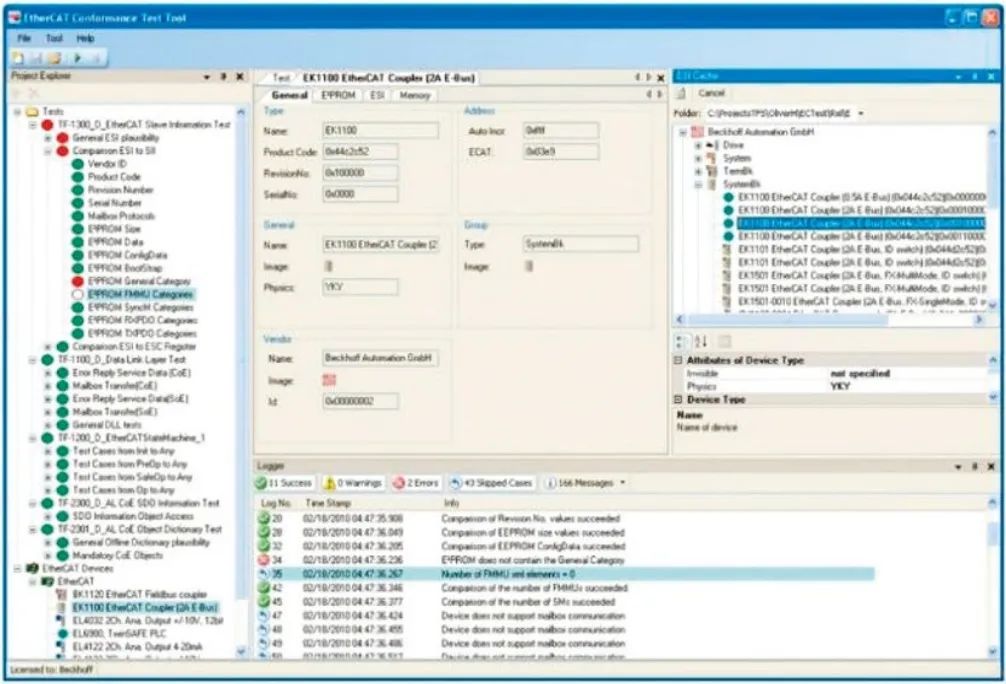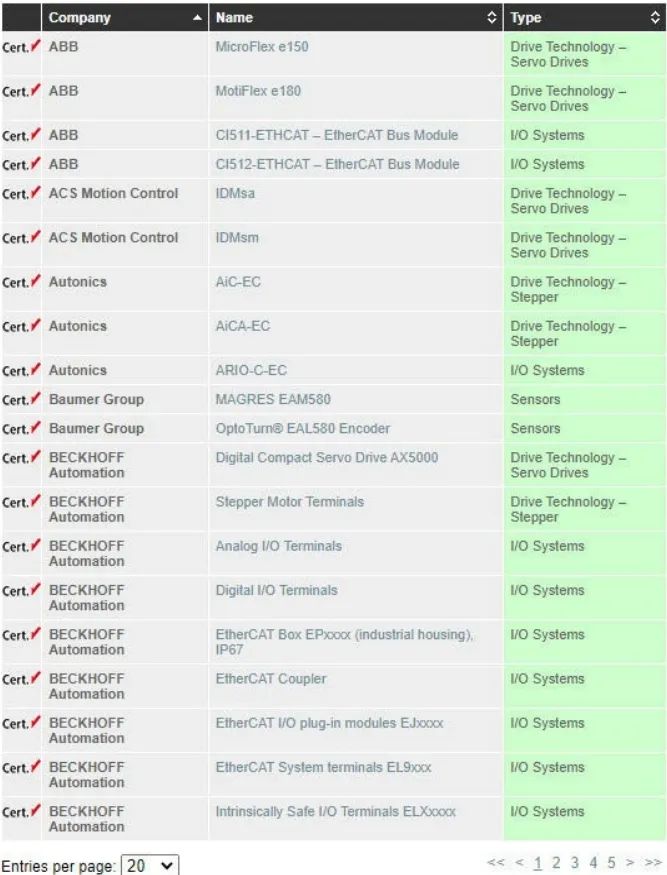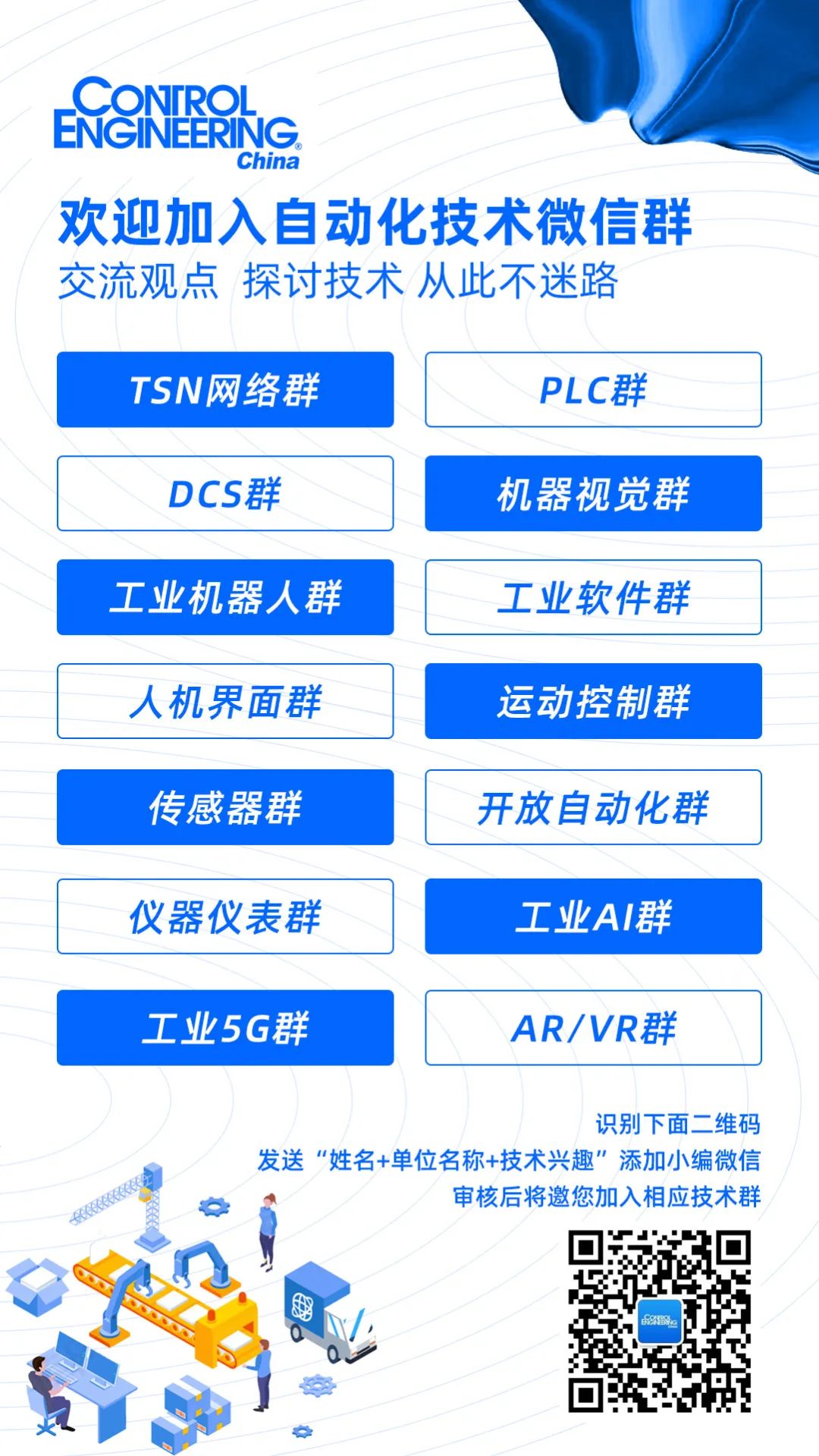

Image Source: ETG
Author | Robert B. Trask
The key development tools and standards ensure interoperability among numerous EtherCAT devices and manufacturers.
Choosing the right communication technology is one of the most important decisions engineers need to make, and interoperability helps make that decision. In some ways, fieldbus communication directly determines whether field devices match the performance of controllers and what devices can be used.
The EtherCAT Technology Group (ETG) places a high value on device consistency and interoperability. Facilitating interoperability among all devices is very complex and requires collective effort. ETG’s goal is to ensure the correct design, development, and successful use of EtherCAT devices by users. The interoperability of devices is the highlight of EtherCAT.
Although EtherCAT has been released for 20 years, there is still only one version of the EtherCAT protocol. The EtherCAT technology has not changed but has been strengthened through extensions. Having a stable foundational specification means new devices can be used in existing systems without issues or version control problems. It also provides a solid foundation for EtherCAT’s extensions, including Safety over EtherCAT (FSoE) for integrating functional safety, EtherCAT P for providing power and communication over a single cable, and EtherCAT G/G10 offering communication rates of 1 Gbit/s and 10 Gbit/s, respectively. Enhanced functionalities will continue, but they will not change the foundational technology of EtherCAT version 1. At the same time, ETG requires all EtherCAT device suppliers to adhere to ETG’s consistency policy.

▲Figure 1: EtherCAT adds several power and communication-related extensions over a single cable and gigabit communication, but the core technology remains unchanged.
01
EtherCAT Consistency Testing Tool
The Consistency Testing Tool (CTT) is a powerful tool for internal testing and development of EtherCAT devices. EtherCAT device developers can run CTT during development to identify potential interoperability issues before market release. It’s like compiling programming code: it’s best to discover and resolve issues early rather than finding a pile of problems at the last compilation.
All EtherCAT device developers need to maintain a CTT subscription. The tool is continually improved to accommodate specific industry testing cases and other changes. Traditional fieldbus systems were— and still are—affected by static testing mechanisms, which swiftly become outdated. ETG members decided to develop a continuously updated consistency testing tool.
All EtherCAT device suppliers must pass consistency testing before their EtherCAT products are launched. Testing results do not need to be submitted but must be provided on demand. CTT, in combination with EtherCAT from the controller (ESC), ensures that EtherCAT devices always work with the network architecture without adversely affecting their performance, reliability, or functionality.

▲Figure 2: Demonstrating interoperability using the EtherCAT Consistency Testing Tool
02
EtherCAT Testing Center
Optional consistency checks can be performed at the EtherCAT Testing Center. CTT results are examined while verifying external markings that the testing tool cannot determine. End users often require suppliers to conduct optional consistency tests at recognized EtherCAT Testing Centers. The results of optional testing are secure, and upon completion, suppliers can announce the successful completion of optional tests.

▲Figure 3: EtherCAT products verified at the EtherCAT Testing Center can obtain this certification in the ETG product guide.
03
FSoE Consistency Testing
FSoE provides a mathematically verified safe communication channel through EtherCAT and complies with standards for reliably and timely transmitting safety data. Using FSoE, functional safety features (like gate interlocks, emergency stops, or safe drives) can communicate over the same communication system that also handles all other process data.
ETG has simplified the FSoE compliance and assessment process, including collaboration with so-called notified bodies, which alleviates the burden on suppliers. There are safety controllers and safety devices from over 40 suppliers. Users can choose the best safety devices for their applications without worrying about interoperability among devices. Previously, users largely had to rely on safety components from a single supplier, which is unprecedented in the safety domain.
04
EtherCAT Plug Testing
Plug testing (PlugFests) supports universal standards like USB. Numerous EtherCAT devices are arranged in a room configured with various EtherCAT controllers and connected together. Experts in EtherCAT consistency testing tools are ready to answer questions at any time. During the event, all EtherCAT devices are connected to the participating controllers. Finally, all EtherCAT devices are interconnected, and each EtherCAT controller connects to the entire system. At that point, all devices are in place and functioning properly.
Without viable interoperability, any fieldbus or communication technology is useless. EtherCAT is designed to integrate field devices that work with various controllers, so users do not have to worry about how they will work together. This will benefit all users.
Key Concepts:
■ Fieldbus communication directly determines whether field devices can match the performance of controllers.
■ FSoE provides a safe communication channel for reliably transmitting safety data.
■ EtherCAT consistency testing and plug testing ensure device interoperability and ease of use.
Think About It:
How do you use EtherCAT in your facility?
– END –

▲This article is from the Control Engineering China magazine (CONTROL ENGINEERING China) July 2023 issue “Technical Article” column: Eliminating Industrial Network Barriers with EtherCAT Interoperability

✦
Recommended Reading
✦





